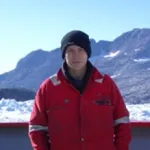The project aims to better understand the ecosystem in the Pacific abyss and how the different components interact and interconnect. We will start by assessing the water and its dynamic flows over time and space. This complex physical environment will be monitored for a year to capture its variabilities, particularly ‘storm events’ near the seabed. We will use this to make predictions about where the sediment plume generated by mining will be transported and settle back to the seafloor. We then assess the linkages between the water, sediment surface and sub sediments, evaluating the natural cycling of nutrients and metals that is important to maintain ecosystem health.
The impacts of mining and recovery of these processes will be assessed. Mining will lead to changes in the structure of the seabed, its shape and the physical nature of the sediments, which will be mapped and linked to biological patterns. The biological processes that lead to these patterns will be assessed by detailing the life histories and reproduction of the organisms present and their connectivity between areas near and far, and then determining their role in maintaining structured communities of life, a high biodiversity and a functioning food web. We will then evaluate the functions in the ecosystem that these organisms provide, which help maintain a healthy ecosystem. The impact of mining and recovery of all these patterns and processes will be determined using our experimental areas to assess the biological and functional consequences of disturbance in the deep sea.
These changes are likely complex, so a range of mathematical models will be used to better understand and predict the consequences of mining activities at larger time and space scales. Such predictive power, along with the evidence from the scientific assessment, will provide information that is critical for understanding and reducing the environmental risk of future mining activities.





